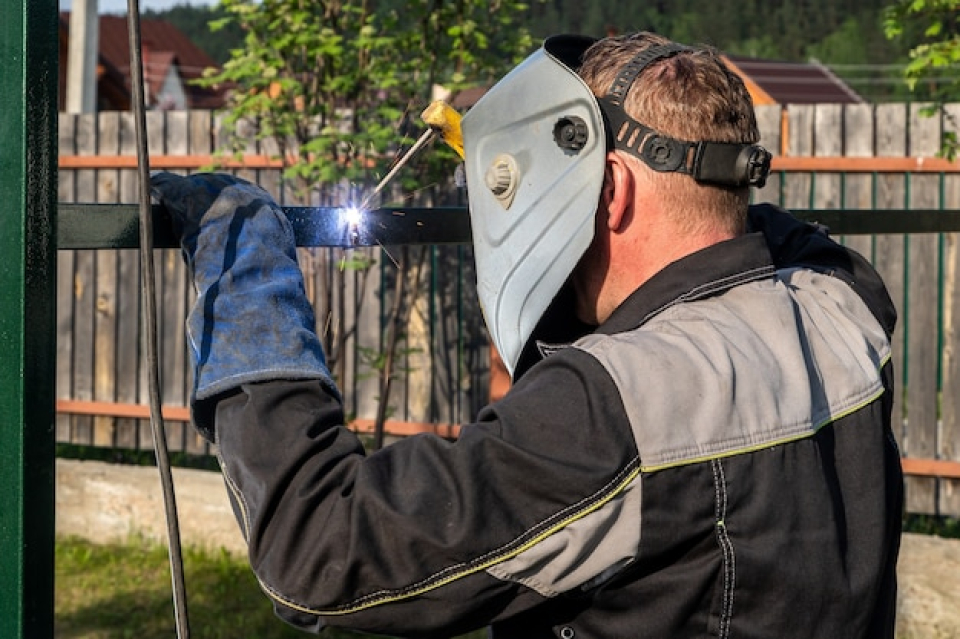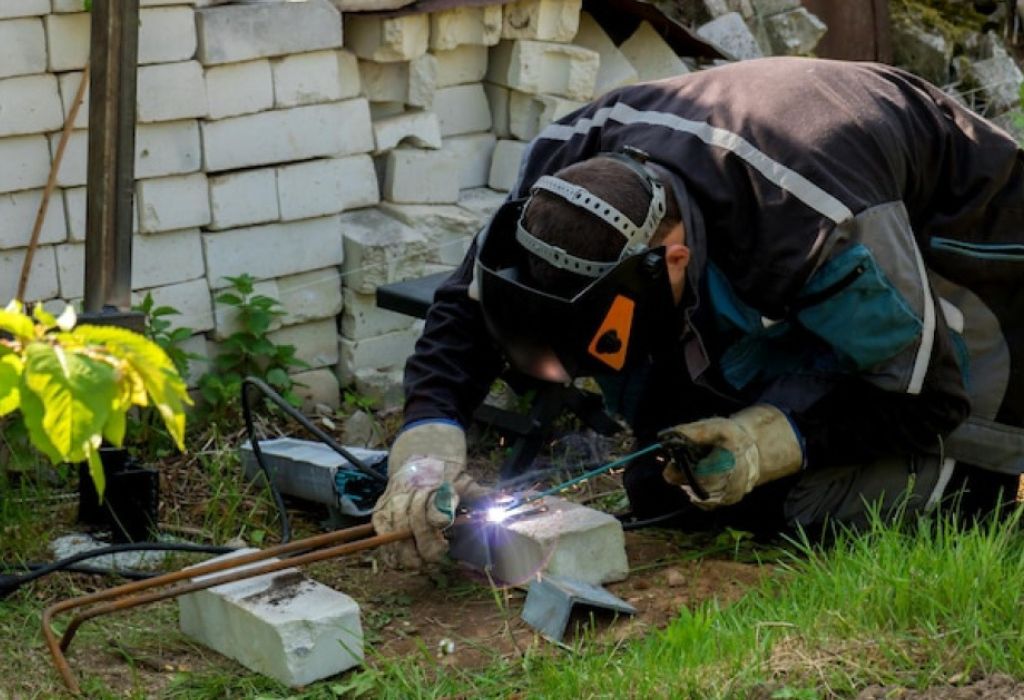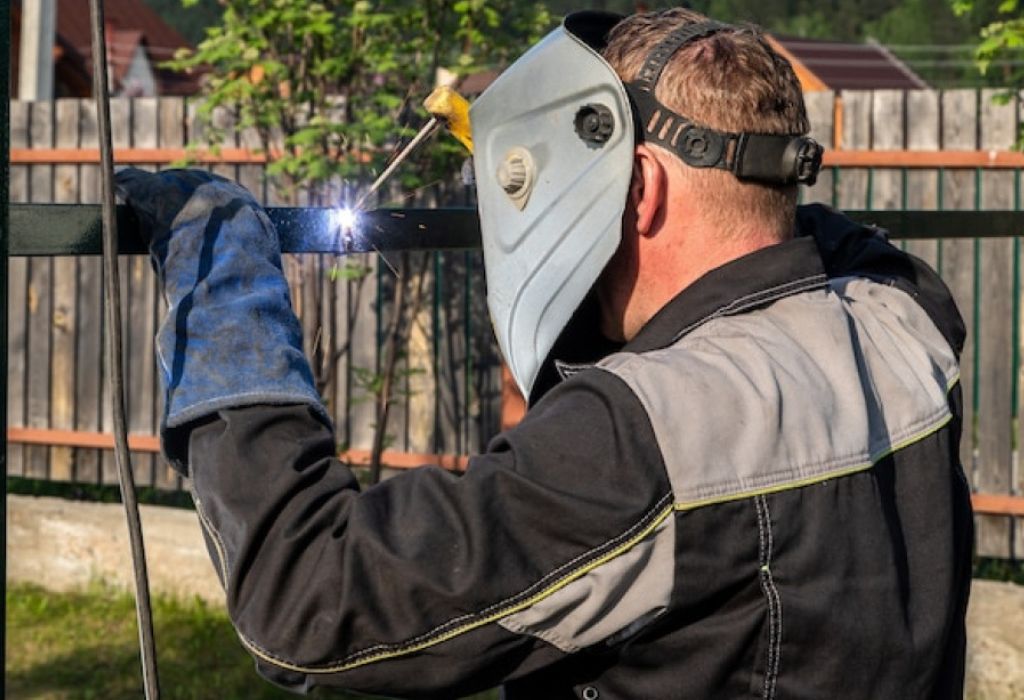The shop floor hums to life before sunrise. Welders clock in at 6 a.m., already dressed in leathers, ready for sparks that will fly through a 10-hour shift.
Across the country, a pipeline crew works a different rhythm, tackling 12 straight hours to meet a project deadline.
Both are examples of the demanding schedules behind the question: how many hours does a welder work a day.
The answer isn’t as simple as “8 hours.” Some welders finish their day after a standard shift, while others push far beyond when contracts demand speed.
The difference often depends on industry, location, and project urgency. In shops, 5×8 or 4×10 schedules dominate. Out in the field, 12-hour shifts during outages or turnarounds are common, sometimes stretching into 7 straight days.
According to the U.S. Bureau of Labor Statistics, welders typically work full time and many face evening or weekend shifts. Overtime is routine, with extended hours whenever plants run around the clock (BLS).
Zippia data confirms that while 40 hours per week is the average, many welders log 50 to 60 hours when overtime kicks in (Zippia).
These long days come with both rewards and risks. Overtime means bigger paychecks, but fatigue and safety concerns grow with every extra hour.
For apprentices, the challenge is building endurance. For veterans, it’s balancing family time with long shifts away from home.
This article explores the daily hours of welders in shops, shipyards, construction sites, and oilfields. By the end, you’ll see how schedules vary, what drives overtime, and how to choose the right balance for your career.
Quick Answer — How Many Hours Does a Welder Work a Day?

Most welders work 8–12 hours per day depending on industry and project requirements. In shops, 8-hour and 10-hour shifts are most common. In pipeline and construction projects, 12-hour days are the norm, especially during critical deadlines.
These hours can quickly add up to 40–60 hours per week. When projects surge, it is not unusual for traveling welders to log 70–80 hours weekly with overtime pay.
Is 8 hours standard for welders?
Yes, many shops run 8-hour shifts, but overtime is common.
Do welders work weekends?
Yes, especially during outages, deadlines, or when plants run 24/7.
How many hours per week is typical?
About 40 hours, but 50–60 hours is common with overtime.
Are 12-hour shifts normal?
Yes, pipeline, shipyard, and shutdown jobs often demand 12s.
Who works the most hours?
Traveling welders in oil and gas often see 70+ hours a week.
What Drives Welder Schedules?
A welder’s schedule depends heavily on where they work. Shops tend to operate on predictable 5×8 or 4×10 schedules. Field jobs, however, follow the project timeline and often stretch to long shifts.
Pipeline and oilfield welding involves tight deadlines. To complete sections quickly, welders may work 12-hour shifts, seven days a week. Manufacturing welders, on the other hand, typically stay closer to 40-hour weeks with moderate overtime.
Why do shops prefer 4×10?
It balances productivity with fewer shift changes.
Why so much overtime in field work?
Deadlines and weather windows demand longer hours.
Do union contracts cap hours?
Yes, many enforce overtime rules and rest breaks.
Is travel time paid?
Sometimes—depends on contract terms.
Can you find 9–5 welding jobs?
Yes, in maintenance or light fabrication shops.
Shift Patterns in Welding
Welding schedules are structured around several patterns. The 5×8 is the traditional model, with welders working Monday through Friday, eight hours each day. The 4×10 compresses the workweek into four long days, often with a three-day weekend.
In high-demand industries, welders face 7×12 schedules. This means seven days straight, each lasting twelve hours, often during shutdowns or outages. Rotating shifts are also common in plants that run 24/7.
What is 7×12?
Seven days of 12-hour shifts during critical projects.
Are rotating shifts tough?
Yes, they disrupt sleep and increase fatigue.
Which pattern pays best?
12-hour shifts with overtime usually pay the most.
Which is best for family time?
4×10 gives longer weekends.
Do shifts vary by process?
Yes, pipe welding and code work often demand longer shifts.
Overtime, Pay Premiums, and Labor Rules

Overtime is a key part of welding schedules. In most regions, time-and-a-half pay begins after 40 hours per week. Some contracts also offer double time for holidays or Sundays.
Extended overtime can significantly increase a welder’s paycheck. Many traveling welders report earning six figures annually by working 60–80 hours per week during peak seasons. However, fatigue and injury risks increase with long stretches of overtime.
How often is overtime required?
Very often in project-based and field jobs.
Does overtime increase injury risk?
Yes, fatigue raises the risk of mistakes.
Is per diem taxed?
Usually not, but rules vary by employer.
Are breaks required?
Yes, by law and often reinforced by union rules.
Why do shops prefer overtime?
It avoids the need to hire and train new welders.
Industry Examples — Shop vs Field
Manufacturing shops usually stick to 40-hour weeks. These jobs may include occasional overtime but often follow predictable schedules. Shipyards and construction jobs regularly run 10–12 hour days.
Pipeline and oilfield welders are known for extreme hours. During peak projects, it is common for welders to work 70–84 hours a week with limited time off. These grueling shifts are often rewarded with premium pay and per diem.
Where are 8-hour days most common?
In stable manufacturing environments.
Do shipyards run 12s?
Yes, especially during deadlines or naval projects.
Do refineries use long shifts?
Yes, during maintenance shutdowns.
Do road projects run nights?
Yes, to minimize daytime traffic disruption.
Do outdoor welders face seasonal slowdowns?
Yes, weather can reduce available work.
A Welder’s Daily Flow
A welder’s day is not all arc time. Hours are split between prep, fit-up, welding, inspections, rework, and cleanup. Setup and waiting for cranes or inspectors often stretch the workday.
Meetings, paperwork, and safety checks add more time. This means a 10-hour shift may include only 5–6 hours of actual welding under the hood.
Is welding all arc time?
No, much of the day is prep and inspection.
Who controls pace?
Supervisors and inspectors.
Why do 12s feel long?
Because heat, posture, and fume exposure build fatigue.
Does automation cut hours?
Not always—it shifts time to setup and quality checks.
How to reduce rework?
Follow WPS and inspection guidelines carefully.
Work–Life Balance and Fatigue
Welders working long hours face fatigue and health challenges. Twelve-hour shifts increase risks of heat stress, burnout, and injuries. Proper hydration, breaks, and protective gear are essential.
Some employers rotate schedules to give welders recovery time. Union contracts often cap maximum hours per shift to protect worker safety.
Best schedule for recovery?
4×10 or capped 12-hour shifts with breaks.
How to manage long projects?
Plan rest days at natural breaks in the schedule.
Is night shift paid more?
Yes, many shops pay a shift differential.
How to avoid burnout?
Take breaks, rotate tasks, and rest when possible.
Do wearables help?
Yes, they can track fatigue and exposure.
Early Career vs Experienced Welders

Apprentices often have variable schedules, working extra hours to gain experience. They may get weekend assignments or night shifts. Experienced welders can choose steadier hours in maintenance or specialty shops.
High-skill welders, such as pipefitters and underwater welders, often endure long hours. Their expertise is needed on critical jobs that demand extended schedules.
Do beginners get steady hours?
Yes, in shops, but field work varies.
Do certifications change hours?
Yes, more certifications often mean longer, higher-paying jobs.
Are travel jobs worth it?
Yes, they pay well but require extended time away.
Where to find steady hours?
Maintenance and union jobs offer stability.
Any remote welding work?
Limited—inspection roles may allow remote reporting.
Choosing the Right Schedule
Every welder must balance income, family time, and health. Some prefer steady 8-hour days. Others chase high paychecks on 12-hour projects.
Understanding your limits and career goals is key. Younger welders may embrace long shifts, while veterans prioritize balance.
Best for steady income?
5×8 with optional overtime.
Best for long weekends?
4×10 schedules.
Best for rapid savings?
12s during shutdowns and pipeline work.
Safest for beginners?
8–10 hours until endurance builds.
How to negotiate hours?
Ask about overtime rules and shift options before starting.
Conclusion
So, how many hours does a welder work a day? The truth is that most welders work 8–12 hours daily, with 40–60 hours a week being standard and longer hours during peak projects.
Welding schedules are shaped by industry, project deadlines, and individual goals. For some, the challenge is endurance. For others, it is finding balance. With the right schedule, welders can enjoy rewarding careers that balance income with health and family.

I’m Darrell Julian, the founder, lead writer, and hands-on welding enthusiast behind ArcWeldingPro.com. With more than 15 years of real-world welding experience, I created this platform to share what I’ve learned in the field, in the shop, and in the heat of the arc.


